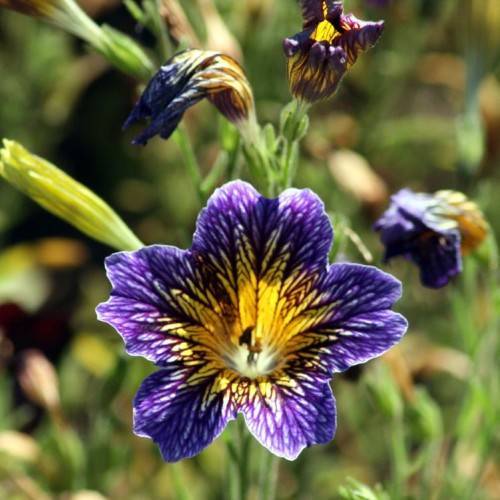
salpiglossis
Salpiglossis (group)
Cycle:
Annual
Watering:
Average
Hardiness Zone:
2 - 11
Flowers:
Flowers
Sun:
Full sun
Leaf:
Yes
Growth Rate:
Low
Maintenance:
Low
Drought Tolerant:
Yes
Salt Tolerant:
Yes
Care Level:
Medium
watering
Salpiglossis plants should be watered when the surface of the soil is dry to the touch. It is best to water early in the day to avoid wetting the foliage and encourage healthy root growth. During the growing season it is important to keep the soil consistently moist but not soggy. It is recommended to water Salpiglossis thoroughly, allowing the water to run out the base of the container. Reduce watering in the winter when plants are dormant but make sure not to let the soil dry out completely as this can cause the foliage to wilt.
sunlight
Salpiglossis is a warm-climate plant species that thrives best when it receives full sun. During the growing season, the plant should receive at least 6 hours of direct sunlight each day to thrive. It can tolerate some light shade, especially during the summer, when strong direct sunlight can cause the plant to become dry and scorched. During the winter, however, it can benefit from a few extra hours of sunlight each day, as the days are shorter and the light is not as intense. By providing the Salpiglossis with the right amount of sunlight each day, it will be able to bloom in vibrant colors all season long.
pruning
Salpiglossis should be pruned once a year in late winter or early spring, before new growth begins. Pruning should be done by selectively removing dead, damaged, and crossed branches. The goal of pruning is to open up the silhouette of the plant, thin the canopy, and improve air circulation which can help prevent disease and encourage flowering. Salpiglossis should not be pruned excessively, and pruning should stop after approximately 10% of the foliage is removed.
